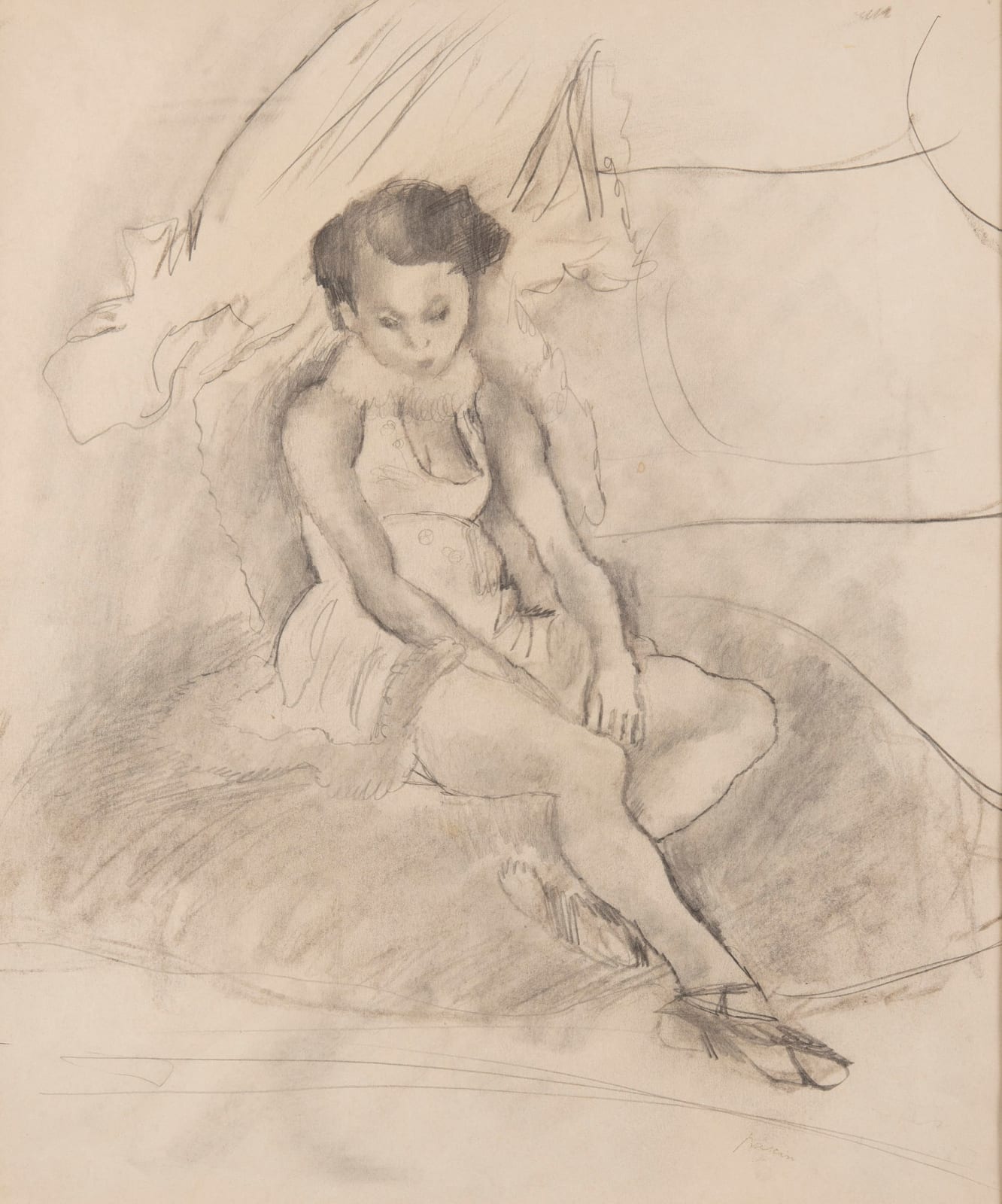Jules Pascin
Le Costume de danse, 1928
pencil and charcoal on paper
18 x 15 1/4 in, 46 x 39 cm
Signed and atelier stamped lower right;, inscribed 'L.K.'
Sold
Born Julius Pincas, Pascin left his wealthy Jewish Bulgarian and Romanian financier family as a teenager to travel the world and pursue an artistic career. First working and studying in...
Born Julius Pincas, Pascin left his wealthy Jewish Bulgarian and Romanian financier family as a teenager to travel the world and pursue an artistic career. First working and studying in Vienna, Munich and Berlin, he earned a living in these early years illustrating for the leading satirical magazines of the period, ‘Lustige Blätter’ and ‘Simplicissimus’.
After settling in Paris in 1905 Pascin became a central figure in the School of Paris: the group of immigrant artists centred in Montmartre around Chagall, Modigliani, Soutine, Foujita, Kisling and Per Krohg. The circle was to become one of the most important strands in French art between the two World Wars.
‘Le Costume de danse’ is a wonderful example of Pascin’s observatory drawings. His technique of using loose, spontaneous lines contrasted against delicate shading and nuances of tone, create an atmosphere of intimacy and grace. As with all of Pascin’s work, the woman appears comfortable within her setting, relaxed and not idealised.
A much loved figure, on his death in 1930, galleries in Paris closed for his funeral and thousands lined the streets in black, walking for three miles behind his coffin. The following year, major retrospectives were staged at the Downtown Gallery, New York and at Bernheim-Jeune, Paris. Pascin’s works can now be found in such major museums as The Metropolitan Museum of Art, New York; Hiroshima Museum of Art, Hiroshima and Louvre, Paris.
After settling in Paris in 1905 Pascin became a central figure in the School of Paris: the group of immigrant artists centred in Montmartre around Chagall, Modigliani, Soutine, Foujita, Kisling and Per Krohg. The circle was to become one of the most important strands in French art between the two World Wars.
‘Le Costume de danse’ is a wonderful example of Pascin’s observatory drawings. His technique of using loose, spontaneous lines contrasted against delicate shading and nuances of tone, create an atmosphere of intimacy and grace. As with all of Pascin’s work, the woman appears comfortable within her setting, relaxed and not idealised.
A much loved figure, on his death in 1930, galleries in Paris closed for his funeral and thousands lined the streets in black, walking for three miles behind his coffin. The following year, major retrospectives were staged at the Downtown Gallery, New York and at Bernheim-Jeune, Paris. Pascin’s works can now be found in such major museums as The Metropolitan Museum of Art, New York; Hiroshima Museum of Art, Hiroshima and Louvre, Paris.
Provenance
Perls Galleries, NYPrivate collection, UK



